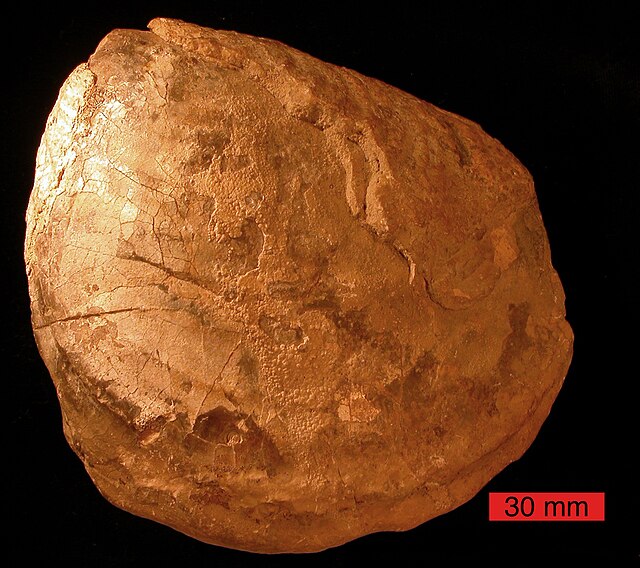The Greenhorn Limestone or Greenhorn Formation is a geologic formation in the Great Plains Region of the United States, dating to the Cenomanian and Turonian ages of the Late Cretaceous period. The formation gives its name to the Greenhorn cycle of the Western Interior Seaway.
The Jetmore Chalk Member of the Greenhorn Formation in Kansas.
The iconic stone posts of Kansas were cut from a layer in the Greenhorn.
Large marine predators of the late Cretaceous; Pliosauroidea and Xiphactinus. Also, huge oyster-encrusted clams.
The Western Interior Seaway was a large inland sea that split the continent of North America into two landmasses. The ancient sea, which existed from the early Late Cretaceous to the earliest Paleocene, connected the Gulf of Mexico to the Arctic Ocean. The two land masses it created were Laramidia to the west and Appalachia to the east. At its largest extent, it was 2,500 feet (760 m) deep, 600 miles (970 km) wide and over 2,000 miles (3,200 km) long.
A broken concretion with fossils inside; late Cretaceous Pierre Shale near Ekalaka, Montana.
Monument Rocks (Kansas), located 25 miles south of Oakley.
Artist's impression of a Cretoxyrhina and two Squalicorax circling a dead Claosaurus in the Western Interior Seaway
Inoceramus, an ancient bivalve from the Cretaceous of South Dakota.







